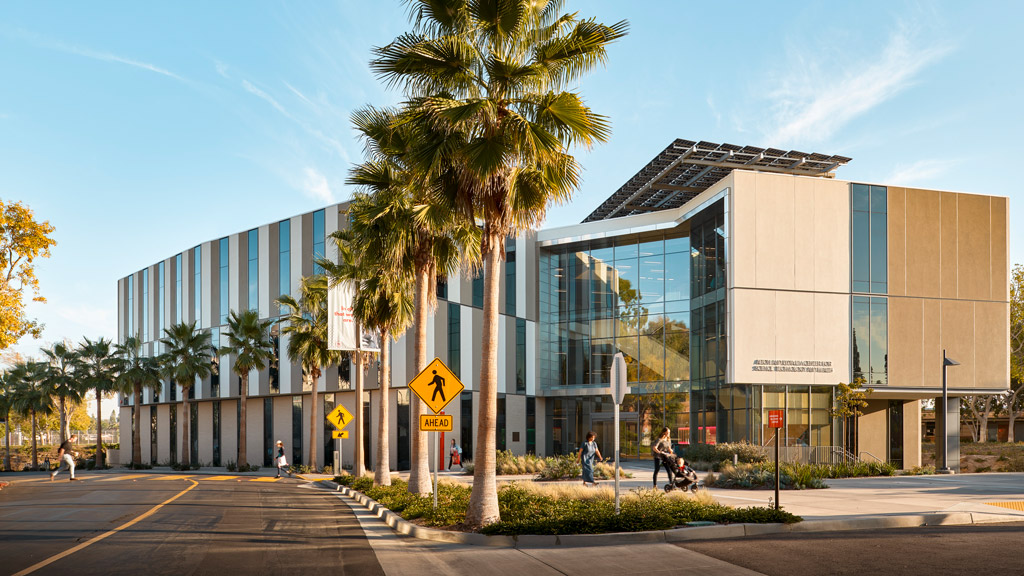Planning for a Post-COVID Return to Campus
April 23, 2020 | By Meghan Webster
Editor’s Note: This post is part of our ongoing exploration of how design is responding to the COVID-19 pandemic.
When our homes became our hubs for learning, working, and living in response to a need for physical distancing, we posed some initial questions about how the global pandemic could drive a significant paradigm shift for traditional modes of higher education. Since then we’ve been talking to our education clients through a series of virtual roundtables. Faced with growing economic uncertainty stemming from unpredictable student enrollment and government funding, our clients keep coming back to two key questions:
- In the short-term, what happens as we return to school in a post-COVID era?
- In the long-term, what can we learn from this experience that we can carry forward to future-proof our campuses?
We view this crisis as a catalyst for change. Schools won’t return to the status quo. Everything — from building design and curriculum to operations and maintenance — may need to adapt to a new normal.
Here are some thoughts about how K-12 and higher-ed institutions should be thinking about the immediate and long-term future.
Current predictions maintain that it’s unlikely that faculty, staff, and students will return to campus all at once. As institutions consider the potential for “rolling occupancy” on campus in order to more effectively enable safe distancing, education leaders need to consider how to implement this approach in physical environments.
To support “rolling occupancy,” we’ll need to create strategies to de-densify existing spaces, rethink underutilized space, and incorporate structures to support hybrid set-ups for digital and physical use.
Similar questions and strategies are happening in the workplace. As organizations and office building developers address the challenge of safely returning employees and tenants to the office, the same strategies of de-densifying workstations could be applied to classrooms, labs, and staff and faculty offices.
Just as some offices are thinking about bringing some people into the office and keeping some people working from home, schools are considering implementing rolling course attendance and alternating weeks of in-person instruction with remote learning.
Since students, teachers, and parents are already familiar with remote learning, this approach could prove to be an easy method of re-entry. This idea of hybrid digital and in-person learning experiences will, however, introduce new challenges for learning spaces themselves.
In fact, schools should be rethinking how they use their spaces anyway. While space use may have formerly been defined for specific purposes, there may now be opportunities to maximize the use of previously underutilized space in brand-new ways. Existing underutilized space could be retooled to create supplemental learning and working environments to provide for safe distancing or be designated as quarantine areas. Some institutions, for example, are re-appropriating dorms for quarantine that were previously not in use.
Student life has been hit hard by physical distancing, but if this experience has taught us anything, it’s that dependence on community and face-to-face interaction is a basic human need.
In the new normal, spaces designated for gathering and socializing will still serve as critical outlets and assets for enriching campus life. What will change is finding ways to incorporate virtual communities and cultures into physical environments.
As campuses are amplifying student life opportunities through digital engagement currently, we can look at what’s working best and consider how we can integrate these new virtual communication practices along with our physical communities in the future.
Mental health has increasingly been a focus for campuses, even before COVID-19. Along with the isolation and uncertainty caused by the global pandemic, rates of depression and anxiety have only increased further. As communities return to campuses, institutions will need to amplify their proactive approach to health and well-being. With an uptick in demand for digital apps and telemedicine interfaces, there are opportunities to supplement these virtual aides with in-person sessions, but this would require campuses to plan for provisions for additional space devoted to mental health support and technical support for telemedicine.
Equipping the campus with a flexible infrastructure that can quickly adapt to uncertainty and change will address preparedness — without being prescriptive. Several major operational shifts in technology, cleaning, and preparedness will drive new usage patterns of infrastructure and space as we plan for the future.
While there’s an obvious need to augment technology infrastructure to better support a hybrid environment, there’s also a need to invest in technology to tackle the disparity that the pandemic has exposed across students with varying socio-economic backgrounds. The need to virtually learn from home has amplified the discrepancy that exists, so a return to a hybrid campus environment will require a heightened support network for students to ensure equitable access to technology.
Along with emerging protocols on clean environments — including ramping up professional cleaning procedures, upgrading air infiltration, practicing good hygiene, and integrating antimicrobial technology — comes a heightened role for cleaning and facilities staff and spaces. Increasing the frequency and quality of cleaning at schools will also require the associated support for storage, conveying, equipment, and staff spaces. Schools will need to proactively and routinely communicate these cleaning and safety measures across campuses to reemphasize the importance of wellness.
With a rise of task forces focused on emergency preparedness, campuses are not only considering immediate challenges but also how they can bolster levels of preparedness for the future. These initiatives are launching new opportunities for cross-collaboration by tying together operations, sustainability, resilience, climate impact, and healthcare departments. Additionally, these efforts will give rise to new ways that campuses will partner with government and local partners as well as integrally tie investment in space to an institution’s ability to drive resiliency planning.
The silver lining of this crisis is the opportunity to use the strategies we’ve learned along the way to serve as a beta test to inform best practices that can be applied to campuses in the future.
Over the past decade, online learning, active learning environments, and an emphasis on experiential learning have emerged on campuses across the globe. As students, faculty, and staff have been forced to quickly adapt their teaching, learning, study, and test-taking process, this population is actively building new skillsets and social behaviors that can later be applied on campus. While our current research on learning includes a tool to collect data around the impact of space on learning, its capacity has recently been expanded to include a learning-from-home component.
When students, faculty, and staff eventually return to campus, they’ll all bring new insight and perspective. Institutions should consider new types of activities and emerging behaviors that will demand new types of spaces, which might include supporting eSports training and competition, digital learning recording and course capture, technology genius bars and help desks, cleaning supply and PPE vending, and on-demand and individualized food distribution.
What’s Next?In the coming months, we’ll also consider how these near-term and longer-term considerations for resilient, connected campuses might play out in different space types – including housing, dining, faculty offices, and innovation spaces. Gathering input — from students and staff who are currently learning and teaching from home — will be critical as we work alongside education clients to redefine and future-proof resilient and safe campuses in a post-COVID era.
For media inquiries, email .

